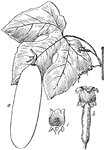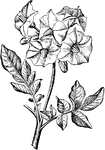
Venetian Guipure Lace Border
This Venetian Guipure lace border is a form of embroidery on knotted net.
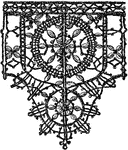
Point Noue Lace Border
The point noue lace border is a 15th century design. It is a pattern that is produced by plaiting and…

Old Point Lace Border
The old point lace border is a form of textile art that has a combination of the conventional treatment…
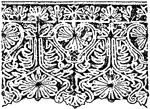
Old Point Lace Border
The old point lace border is a form of textile art that has a combination of the conventional treatment…
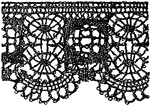
Modern Pillow Lace Border
The modern pillow lace border is a form of textile art that has a combination of the conventional treatment…
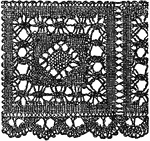
Modern Pillow Lace Border
The modern pillow lace border is a form of textile art that has a combination of the conventional treatment…
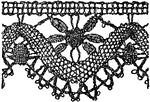
Modern Pillow Lace Border
The modern pillow lace border is a form of textile art that has a combination of the conventional treatment…

Border Typographical Frame
This border typographical frame was designed during the Renaissance period between 1550-1560. It was…

Border Typographical Frame
The border typographical frame was used as a decoration for books and documents.

Border Typographical Frame
This Flemish border typographical frame was designed during the Renaissance period in the 16th century.
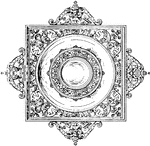
Renaissance Strap-Work Border And Margin
This Renaissance strap-work border and margin is of German origin, it was used as an additional exterior…
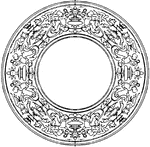
Renaissance Strap-Work Border And Margin
This Renaissance strap-work border and margin is of Italian origin, it was used as an additional exterior…
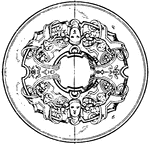
Renaissance Strap-Work Border And Margin
This Renaissance strap-work border and margin was designed during the 16th century. It was used as an…
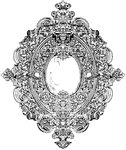
Modern Strap-Work Border And Margin
This Modern strap-work border and margin comes from Spain. Made out of metal, it has a rim that is decorated…

Modern Strap-Work Border And Margin
This Modern strap-work border and margin comes from Spain. Made out of metal, it has a rim that is decorated…

Cyperus
An illustration of the partial inflorescence of a cyperus plant, spikelet of the same (left), and the…
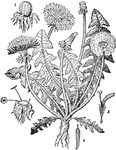
Dandelion
Taraxacum is a large genus of flowering plants in the family Asteraceae. They are native to Europe,…
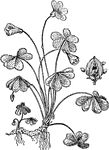
Oxalis
Oxalis is the largest genus in the wood sorrel family Oxalidaceae. Of the approximately 900 known species…
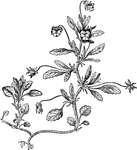
Heartsease
Heartsease (Viola tricolor) is a common European wild flower, growing as an annual or short-lived perennial.…
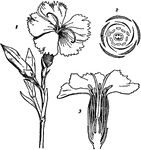
Dianthus
Dianthus is a genus of about 300 species of flowering plants in the family Caryophyllaceae, native mainly…
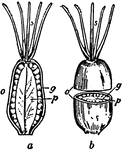
Mouse-ear Chickweed
An illustration of the pistil, female reproductive part of the flower, from the mouse-ear chickweed.…
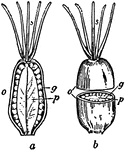
Cashew Tree
An illustration of various parts of the cashew tree. "1, Branch, bearing flowers and fruit. The fruit…

Holly
Ilex aquifolium (Holly, or European Holly to distinguish it from related species) is a species of holly…

Plant House
A lean-to plant house which is associated with the growth of ornamental plant and flowers.

Root-Grafting of Dahlia
Grafting is a method of asexual plant propagation widely used in agriculture and horticulture where…
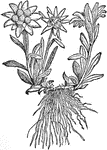
Edelweiss
Edelweiss (Leontopodium alpinum) is a European mountain flower of the Asteraceae or daisy family.

Fumitory (Side-view)
An illustration of the side-view of the fumitory flower Fumaria is a genus of about fifty annual herbaceous…

Fumitory Flower (Longitudinal Section)
An illustration of a longitudinal section of the fumitory flower. Fumaria is a genus of about fifty…
Fumitory Flower Anther
An illustration of a fumitory flower anther. Fumaria is a genus of about fifty annual herbaceous flowering…
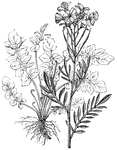
Cardamine
An illustration of: A, Inflorescence and cauline leaves; B, Radical leaves and root. Cardamine (Car-dá-mi-ne,…
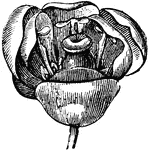
Berberis Flower
An illustration of the berberis flower. Berberis (Bér-be-ris, barberry, pepperidge bush) a genus…
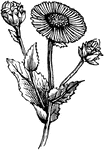
elecampane
The Elecampane (Inula helenium) is a flowering plant in the Asteraceae family of daisies.
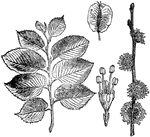
English Elm
Now known as Ulmus procera, the image shows a "Flowering Branch and Foliage of English Elm (Ulmus campestris),…
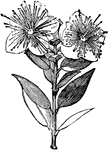
Myrtle
The Myrtle (Myrtus) is a genus of one or two species of flowering plants in the family Myrtaceae, native…

Carrot Flower
An illustration of the inflorescence of the carrot plant. An inflorescence is a group or cluster of…

Fructification of Carrot Flower
An illustration of fructification of the carrot flower. Fructification is a term used in the plant morphology…
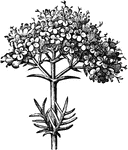
Valerian Inflorescence
Valerian is a hardy perennial flowering plant, with heads of sweetly scented pink or white flowers.…

Valerian Flower
Valerian is a hardy perennial flowering plant, with heads of sweetly scented pink or white flowers.…

Valerian Flower (Longitudinal Section)
An illustration of a longitudinal sectional view of the valerian flower. Valerian is a hardy perennial…
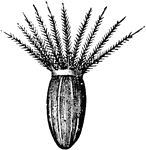
Valerian Seed with Pappus
An illustration of the valerian seed with attached pappus. In a composite flower, Pappus is the part…
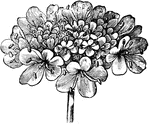
Inflorescence of Field Scabious
An illustration of the inflorescence of the field scabious. Knautia arvensis, commonly known as Field…
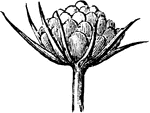
Young Inflorescence of Field Scabious
An illustration of the young inflorescence of the field scabious. Knautia arvensis, commonly known as…

Ray-floret of Field Scabious
An illustration of a ray-floret of the field scabious. Knautia arvensis, commonly known as Field Scabious,…

Ray-floret of Field Scabious
An illustration of a ray-floret of the field scabious. Knautia arvensis, commonly known as Field Scabious,…

Seed of Field Scabious
An illustration of the seed of the field scabious. Knautia arvensis, commonly known as Field Scabious,…
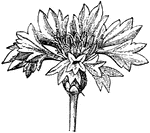
Inflorescence of a Cornflower
An illustration of the inflorescence of the cornflower. Centaurea cyanus ('Cornflower, Bachelor's button,…

Ray-floret of a Cornflower
An illustration of a ray-floret of the cornflower. Centaurea cyanus ('Cornflower, Bachelor's button,…
Disk-floret of a Cornflower
An illustration of a disk-floret of the cornflower. Centaurea cyanus ('Cornflower, Bachelor's button,…
Disk-floret of a Cornflower (Longitudinal
An illustration of a longitudinal section view of a disk-floret of the cornflower. Centaurea cyanus…
Disk-floret of the Senecio
An illustration of a disk-floret of the senecio flower. Senecio is a genus of the daisy family (Asteraceae)…

Disk-floret of the Senecio (Longitudinal Section)
An longitudinal section view of a disk-floret of the senecio flower. Senecio is a genus of the daisy…

Female ray-floret of the Senecio
An illustration of a ray-floret of the senecio flower. Senecio is a genus of the daisy family (Asteraceae)…
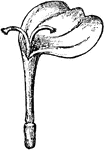
Gynaeceum of the Senecio
An illustration of the gynaeceum of the senecio flower. Senecio is a genus of the daisy family (Asteraceae)…

Comfrey Flower
Comfrey (also comphrey) is an important herb in organic gardening, having many medicinal and fertilizer…

Viper's Bugloss Flower
Echium vulgare (Viper's Bugloss) is a species of Echium native to most of Europe, and western and central…
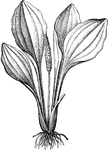
Plantain Flower
An illustration of a plantain plant. The plantain is a crop in the genus Musa and is generally used…
